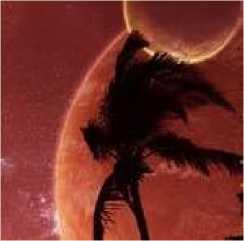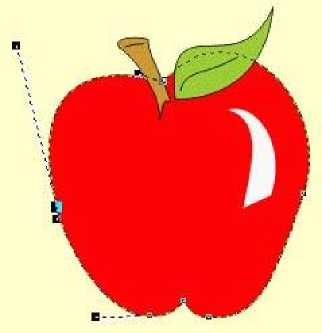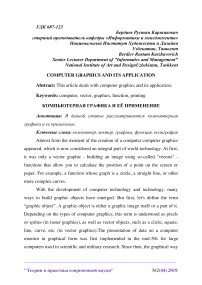Компьютерная графика и её применение
Автор: Бердиев Р.К.
Журнал: Теория и практика современной науки @modern-j
Рубрика: Основной раздел
Статья в выпуске: 2 (44), 2019 года.
Бесплатный доступ
В данной статье рассматриваются компьютерная графика и ее применение.
Компьютер, вектор, графика, функция, полиграфия
Короткий адрес: https://sciup.org/140274242
IDR: 140274242
Текст научной статьи Компьютерная графика и её применение
Almost from the moment of the creation of a computer computer graphics appeared, which is now considered an integral part of world technology. At first, it was only a vector graphic - building an image using so-called "vectors" -functions that allow you to calculate the position of a point on the screen or paper. For example, a function whose graph is a circle, a straight line, or other more complex curves.
With the development of computer technology and technology, many ways to build graphic objects have emerged. But first, let's define the term “graphic object”. A graphic object is either a graphic image itself or a part of it. Depending on the types of computer graphics, this term is understood as pixels or sprites (in raster graphics), as well as vector objects, such as a circle, square, line, curve, etc. (in vector graphics).The presentation of data on a computer monitor in graphical form was first implemented in the mid-50s for large computers used in scientific and military research. Since then, the graphical way of displaying data has become an integral part of the overwhelming number of computer systems, especially personal ones.
Today's graphical user interface is the de facto standard for software of various classes, starting with operating systems. A separate subject is considered three-dimensional (3D) graphics, which studies the techniques and methods for constructing three-dimensional models of objects in virtual space. As a rule, it combines vector and raster imaging methods. Features of the color gamut characterize such concepts as black and white and color graphics. The specialization in certain areas is indicated by the names of some sections: engineering graphics, scientific graphics, Web-graphics, computer printing and others. At the junction of computer, television and film technologies, a relatively new field of computer graphics and animation was born and is rapidly developing.
Computer graphics is one of the modern technologies of creating various images using computer hardware and software, displaying them on a monitor screen and then saving them in a file or printing to a printer. A prominent place in computer graphics is reserved for entertainment. There was even such a thing as a mechanism for the graphic representation of data (Graphics Engine). The gaming software market has a turnover of tens of billions of dollars and often initiates the next stage of improving graphics and animation.
Although computer graphics are just a tool, its structure and methods are based on advanced achievements of the fundamental and applied sciences: mathematics, physics, chemistry, biology, statistics, programming, and many others. This remark applies to both software and hardware for creating and processing images on a computer. Therefore, computer graphics is one of the most rapidly developing branches of computer science and in many cases acts as a "locomotive", pulling the entire computer industry.Computer graphics is a rapidly developing field of application of computer technology. The overwhelming majority of issues addressed under the generic term “computer graphics” are in fact an application to other fields of application of computer technology, including data structures, operating systems, and hardware design.
Since the issues of software and hardware support for computer graphics are somehow covered in computer engineering and programming courses, the main goal of this discipline is to consider the basic algorithms of the so-called Graphic Pipeline, which is a coherently connected sequence (or group) of calculations synthesized at the output of the system image of the spatial scene. The conveyor is divided into a number of stages, at each of which a certain function is realized.For raster images consisting of points, the concept of resolution, expressing the number of points per unit length, is of particular importance. It should be distinguished: 1 resolution of the original; 2 screen resolution;

3 resolution of the printed image .
The resolution of the original is measured in dots per inch (dots per inch - dpi) and depends on the requirements for image quality and file size, the method of digitizing and creating the original illustration, the chosen file format and other parameters. In general, the rule applies: the higher the quality requirement, the higher should be the resolution of the original.The resolution of the screen image. For screen copies of an image, an elementary raster point is called a pixel. The pixel size varies depending on the selected screen resolution (from the range of standard values), the resolution of the original and the scale of the display.Monitors for image processing with a diagonal of 20-21 inches (professional grade), as a rule, provide standard screen resolutions
of
640x480, 800x600,
1024x768.12280x1024,1600x1200,1600x1280, 1920x1200, 1920x1600 pixels. The distance between adjacent points of the phosphor at a quality monitor is 0.22-0.25 mm. For a screen copy, a resolution of 72 dpi is enough, for printing on a color or laser printer of 150-200 dpi, for output on a photo-exposure device 200-300 dpi. It is a rule of thumb that when printing, the resolution of the original should be 1.5 times greater than the screen resolution of the output device. If the hard copy is increased in comparison with the original, these values should be multiplied by the scaling factor.The resolution of the printed image and the concept of lineature. The size of a bitmap point on a hard copy (paper, film, etc.) and on the screen depends on the applied method and the rasterization parameters of the original. When rasterized on the original, a grid of lines is superimposed, the cells of which form a raster element. The raster grid frequency is measured by the number of lines per inch (lines per inch - Lpi) and is called lineature.If in raster graphics the base element of the image is a point, then in vector graphics it is a line. The line is described mathematically as a single object, and therefore the amount of data for displaying an object by means of vector graphics is substantially less than in raster

graphics.
Line - an elementary object of vector graphics. Like any object, the line has the properties: shape (straight, curve), thickness, color, outline (solid, dotted). Closed lines acquire the property of filling. The simplest open line is bounded by two points, called nodes. Nodes also have properties whose parameters affect the shape of the end of the line and the nature of conjugation with other objects. All other objects of vector graphics are composed of lines. For example, a cube can be made up of six connected rectangles, each of which, in turn, is formed by four connected lines. It is possible to imagine a cube as twelve connected lines forming edges.
Used source:
1. Курушин В.Д. Графический дизайн и реклама. - М.: ДМК - Пресс,
2001. 272с.
-
2. Месхешвили Н.Экспрессивные средства письменной коммуникации
Ин-т языкознания АН СССР. - М.:2006
Список литературы Компьютерная графика и её применение
- Курушин В.Д. Графический дизайн и реклама. - М.: ДМК - Пресс, 2001. 272с.
- Месхешвили Н.Экспрессивные средства письменной коммуникации Ин-т языкознания АН СССР. - М.:2006


